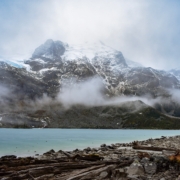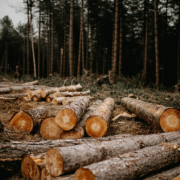Addressing the challenges of solid waste management in Indigenous communities
Solid waste management is a climate change issue. The decay and combustion of solid waste contribute to greenhouse gas emissions in the form of methane and nitrous oxide. Indigenous communities that do not have adequate solid waste management systems face challenges to their health, safety, land and water. Additional funding and community education can benefit Indigenous communities to meet the environmental challenges of solid waste management more effectively.
Solid waste is often referred to as garbage. Solid waste management involves “collecting, treating, and disposing of solid material,” which is thrown away because it is deemed to be no longer useful. If waste is not managed properly, it can result in environmental pollution, vector-borne diseases spread by rats and insects, and outcomes associated with poor sanitation. Improper waste disposal techniques in managing landfill wastes can result in the leaching of contaminants (i.e., leachates) into well water, ground water, and surrounding surface waters (e.g., lakes, rivers, and streams).
Two First Nation communities facing challenges to solid waste management are those of the Garden Hill First Nation and Wasagamack First Nation in Northern Manitoba. In 2018, a research study outlined how both Garden Hill and Wasagamack communities resorted to open dumping and burning toxic waste, including styrofoam and electronic waste (i.e., e-waste) in backyards disposal pits, because of poor infrastructure for safe and effective solid waste disposal and management. The study asked Indigenous community members to identify key issues in solid waste management that required attention; these included:
- Lack of waste management for toxic wastes including plastic and e-waste.
- Lack of funds dedicated for waste management.
- Lack of curbside waste collection, leading to the proliferation of multiple community garbage dumps, including in backyards, and close to homes.
- Lack of enforcement of environmental regulations by federal governments on dumping by off-reserve contractors.
- How “reserves provide a black hole for toxic waste, stewarded products, and recyclables.”
The Assembly of First Nations (AFN) has called for funding for First Nation communities to increase the capacity of landfill and transfer stations, to store or accommodate wastes, and to innovate sustainable solutions to solid waste management. Projects like a proposed engineered wetland in Wasagamack First Nation hold the potential to reduce the adverse effects of leaching and its residual effects. The human-made wetland would use phytoremediation—a mitigation practice of introducing native plants in former disposal pits to reduce the concentration of leachates contaminating the environment. Educational projects like the Seventh Generation Waste Warriors are also promising, to inform Indigenous youth about how to develop waste diversion projects in their own communities. The lack of funding to both rural and urban Indigenous communities for solid waste management is corroborated in a 2021 report by Indigenous Services Canada that evaluated the First Nations Solid Waste Management Initiative (FNSWMI), a program that funds Indigenous solid waste management initiatives.
Indigenous communities need adequate and sustained funding to design, operate, and maintain solid waste management systems. Community education programs that foster collaborative approaches also deserve focused attention.
By Leela Viswanathan
(Image credit: Sara Cottle, Unsplash)



 Annie Spratt
Annie Spratt

